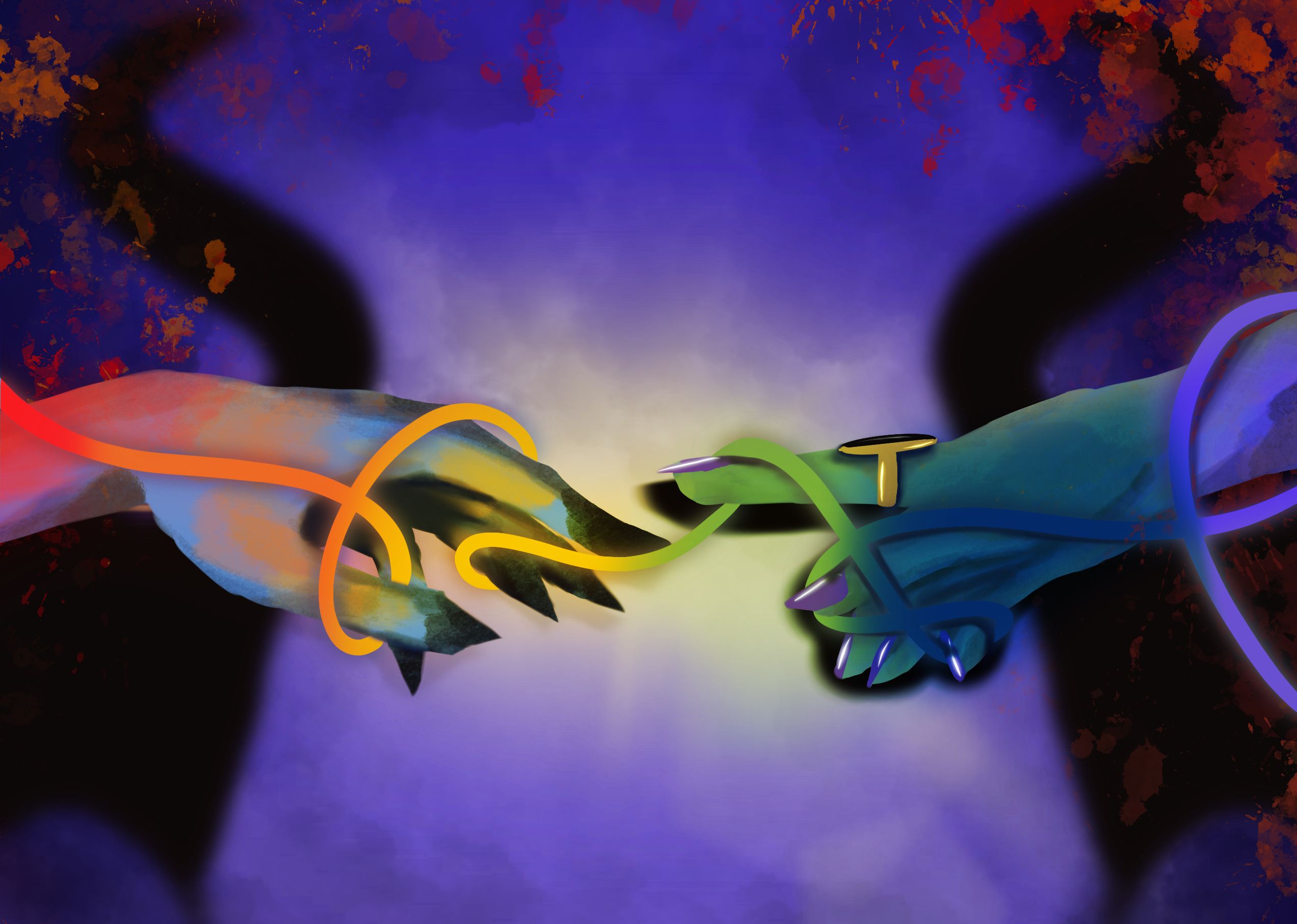In every tale of virtue, valor, and triumph, there’s a formidable adversary for our hero to overcome. Across the media spectrum, the most iconic villains have always been huge personalities in their own right, rivaling even the main protagonist’s charisma. From Maleficent to Dr. Facilier, these beloved adversaries exude extravagance and spectacle while maintaining their threatening presence, balancing their imposing nature with an undeniable charm that refines their wicked antics into a holistically enjoyable performance.
Often at these characters’ cores, however, is a curious trait: so many seem a little bit fruity.
At first, it seems preposterous. With such little on-screen queer representation in general, surely there aren’t enough queer antagonists for this to be a noticeable trend? But many antagonists, rather than being explicitly labeled as “queer,” are coded with queer characteristics and mannerisms. Through their appearances, movements, and voices, these characters consistently flout norms of behavior and embrace abnormality, defying the gender binary. They perform gendered extremes and in-betweens in the most exaggerated and captivating ways possible—think Ursula’s smoky eye and devious body language, HIM and his campy wickedness, Frank-N-Furter’s, well, everything, and so on.
Are these characters deliciously devious? Of course. But behind their maniacal machinations is genuine appeal and theatrical extravagance to the queerest degree. They are more than merely evil—they are extraordinary.
That extraordinariness has resonated with many queer youth. Despite this, problems underlie the ubiquity of these queer-coded villains. Hollywood’s use of queerness almost exclusively in its villains—as deviations from the norm—has become a lazy and problematic cop-out. This habitual reliance on stereotypically queer traits to portray antagonism correlates queerness with the monstrous and villainous “other.”
This pattern is the devilish child of a much more sinister villain: The Hays Code. From the ’30s to ’60s, the code regulated Hollywood’s content. Most notably, it forbade the explicit portrayal of any form of sexual “perversion” on screen and severely limited the capacity for queer representation.
Consequently, filmmakers and television producers resorted to implementing more subtle references to queerness in their characters. However, to avoid seeming like they condoned sexual deviancy, many limited these implicit portrayals to characters that were otherwise morally depraved, often saving heteronormative characterizations for the hero. Thus, the delectably fruity queer-coded villain was officially born.
Disney, being the media juggernaut that it is, is responsible for many of these beloved villains: Scar (Lion King [1994]), Hades (Hercules [1997]) and Captain Hook (Peter Pan [1953]) just to name a few. While villains like Ursula are very clearly based on real-life queer icons like the late drag queen, Divine, others like Hades and Scar embody queerness through their flamboyance and theatrical flair. Even more sympathetic antagonists, such as Frozen’s (2013) Elsa, whose journey of self-acceptance resonated with many queer viewers, are not free from these subliminal codes.
These iconic villains captivate the audience in ways their protagonist counterparts do not. However, the reliance on stereotypes to build recognizably queer features into otherwise uncoded personalities has dire consequences. The consistent correlation between queerness and evil, whether intentional or not, results in the subconscious assumption that queerness is inherently evil.
This isn’t to say that queer people should never be the villains of a story (because evidently, we are unquestionably spectacular at it), but it becomes a problem when we are only the villain and nothing else. Not only does this narrative accomplish the sinister goal of the (now-defunct) Hays Code, but it also forms the foundation for the self-doubt and self-loathing that many queer people experience; if you only ever see yourself as the villain, over time you may begin to internalize it.
Luckily, great progress has been made in the last several decades to deviate from this practice. Studios like Disney have begun to diversify their portrayals of villainy to better reflect the world we live in, moving instead towards more conceptual “villains” (like family trauma) and morally complex antagonists. As such, modern-day Disney villains like Eternals’s (2021) Ikaris and Raya and the Last Dragon’s (2021) Druun have dropped the kitschy outfits and flamboyant accents in favor of more generic aberrant characteristics.
Yet at the same time, many fans have decried modern Disney films’ lack of a compelling antagonistic force. This controversy begs an interesting question: why have villains lost their luster now that they’ve also (largely) lost their queer and extravagant flair?
A big part of the issue is that a lot of modern villains are simply boring, resigned to fill the role of tedious time-fillers rather than meaningful obstacles for the protagonists. Where even the name of characters like Hades meant something, modern villains like Captain Marvel’s (2019) Yon-Rogg are forgettable at best and laughably inconsequential at worst. Even more morally complex antagonists like Raya’s Namaari lack the follow-through to draw in audiences, leaving what could be a very compelling antagonist on paper feeling like a waste of time.
So, what’s the solution? Returning to villains that rely on queer stereotypes and prejudices is not the answer. Neither is simply replacing queer extravagance with moral complexity. Rather, antagonists should be afforded complexity not in spite of extravagance, but because of it. A balance certainly exists between flavorful villainy and harmful caricature; studios, like Disney, just have yet to find it. But doing so could mean a world of difference, keeping our favorite antagonists fun and entertaining to watch while creating space for queerness to be represented on-screen outside of the traditional and stereotype-filled villainous role.
Queerness includes a vast spectrum of experiences and beliefs, and our characters should reflect this. Queer people should not be locked into one-dimensional tropes that paint a skewed picture of what it means to be queer—explicitly or otherwise. We contain multitudes. We laugh, we cry, and we get angry too. We can be the best friend or the wise elder. We can also be the hero, the role model, and even the damsel in distress. And sometimes, as a treat, we can be silly and evil too.





Thank you for this article! I am doing a history project on this topic, do you have a great books or references materials you could point me to for further study?